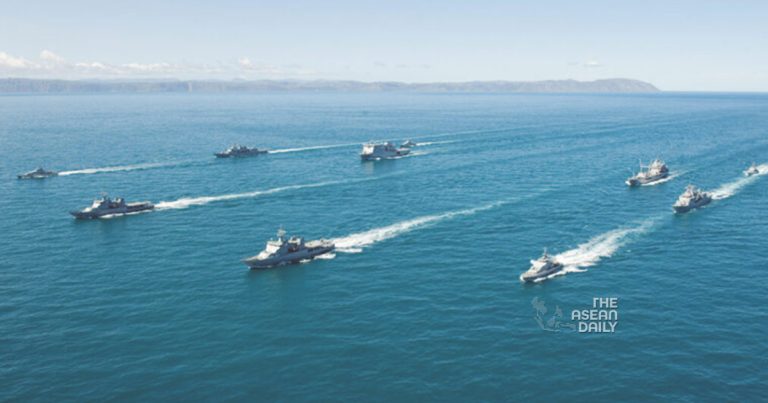4-1-2024 BEIJING) China has criticized the United States and its ally, the Philippines, for what it deems “provocative” actions in the disputed waters of the South China Sea. Both sides conducted separate exercises this week, further escalating tensions in the region.
The People’s Liberation Army (PLA) Southern Theater Command of China announced on Wednesday that its navy and air force had been engaged in “routine patrols” in the South China Sea for two days, with the deployment scheduled to end that day. The exact location and specific objectives of the exercises were not disclosed.
Coinciding with China’s drills, the United States revealed that the USS Carl Vinson aircraft carrier strike group was conducting two days of joint exercises with the Philippine Navy. Beijing condemned these maneuvers as “provocative military activities” aimed at showcasing military prowess.
Wang Wenbin, spokesperson for China’s foreign ministry, stated that the exercises were detrimental to the management and control of the maritime situation and related disputes. He urged the relevant countries to halt their irresponsible actions and respect the efforts made by regional countries to maintain peace and stability in the South China Sea. Wang emphasized that China would staunchly defend its territorial sovereignty and maritime rights and interests.
China claims nearly the entire South China Sea, disregarding a ruling by an international tribunal that dismissed its claims as lacking legal basis. To reinforce its assertions, China has constructed artificial islands and militarized them, in addition to deploying patrol boats in the busy waterway.
While China typically employs its coast guard to assert its claims, military exercises are not uncommon. In late November, Beijing’s navy conducted “routine” drills. Chinese state broadcaster CCTV released footage of the recent exercises, which included a “live fire drill” featuring aircraft flying over the sea and a fighter jet launching a missile.
These drills follow a month of tense confrontations between China and the Philippines in disputed reefs. The clashes involved collisions between vessels and Chinese ships using water cannons against Philippine boats. Experts suggest that China aims to transform the South China Sea into a Chinese-controlled waterway and a strategic chokepoint for other nations. Michael Raska, an assistant professor and military expert at Singapore’s Nanyang Technological University, stated that the South China Sea is increasingly becoming a key defensive zone for China. Beijing is also utilizing the area to enhance its reconnaissance and surveillance capabilities, projecting its presence and influence in the region.
While China routinely dispatches warships to monitor US aircraft carriers in the South China Sea and observe multilateral military activities, publicly announcing such exercises is rare. According to Duan Dang, a maritime analyst based in Vietnam specializing in the South China Sea, China’s announcement signifies the seriousness of the exercise.
China has placed blame on the Philippines for the recent surge in tensions. The Chinese foreign ministry accused Manila of reneging on its commitments, changing policies, infringing on China’s sovereignty, and repeatedly provoking complex situations. On December 29, ministry spokesperson Mao Ning warned that China would take resolute measures against any violations of its sovereignty and provocations, firmly safeguarding its territorial sovereignty and maritime rights and interests.
These drills also come after the appointment of Dong Jun as China’s defense minister. Dong, a former navy chief and deputy commander of the Southern Theater Command, possesses experience in military tensions and challenges related to Taiwan, the South China Sea, and the East China Sea. Sheena Chestnut Greitens, an expert in Chinese politics, suggests that Dong’s background played a role in his promotion, given his operational experience and familiarity with the aforementioned areas of concern.




